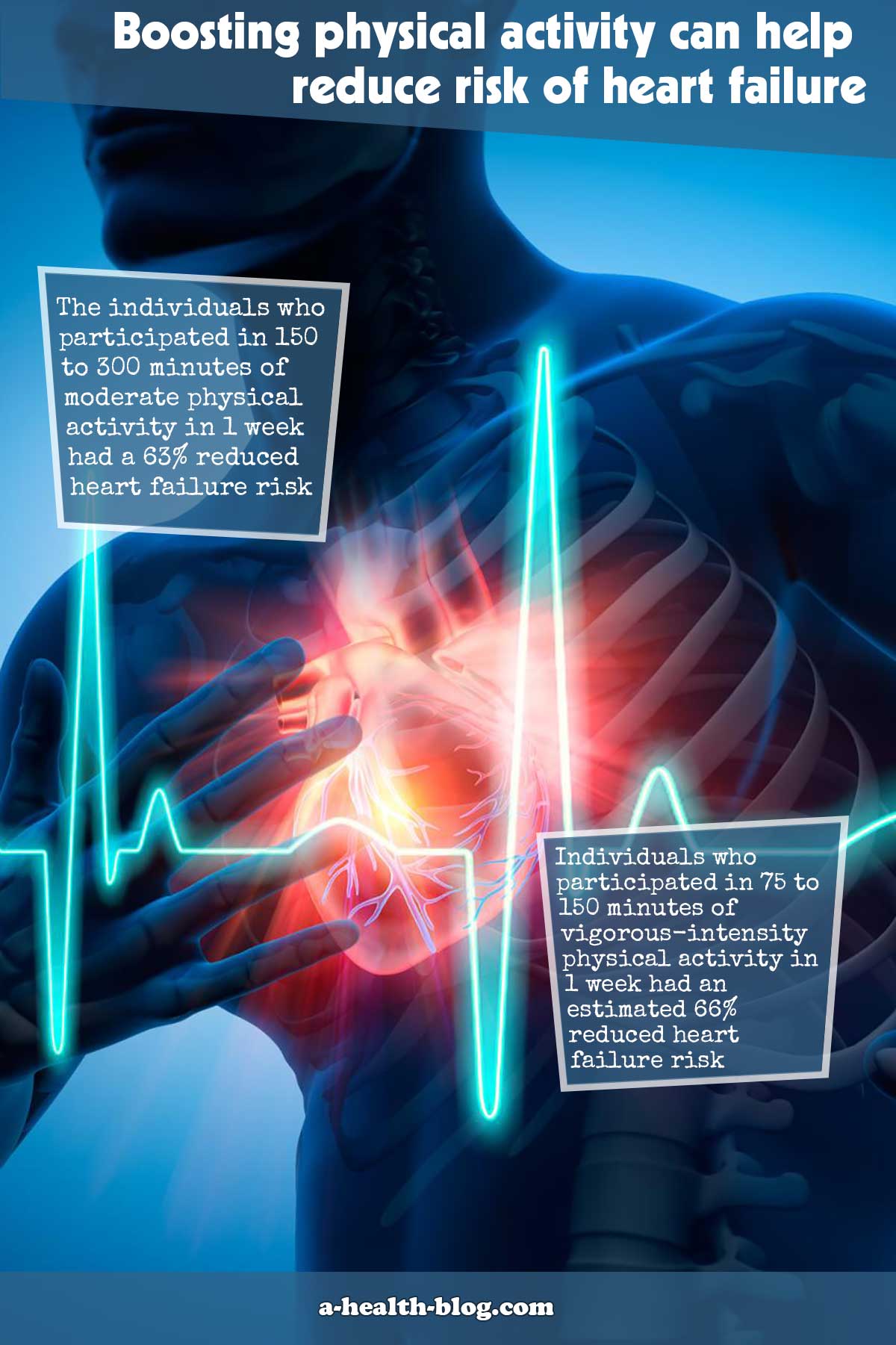According to a 6-year analysis involving over 94,000 individuals without any history of heart failure at the time of enrollment, participating in moderate or vigorous physical activity could help reduce heart failure risk.1✅ JOURNAL REFERENCE
DOI: 10.1161/CIRCULATIONAHA.122.059663
The study used objectively measured activity levels for estimating the risk of heart failure. The results are in line with earlier research finding that participating in moderate exercise every week for 150-300 minutes or vigorous exercise for 75-150 minutes can help reduce stroke and heart attack incidence.
Heart failure is a chronic, progressive disorder that happens when the heart isn’t able to pump enough blood to maintain the needs of the body for blood and oxygen, and it can lead to fatigue and breathing difficulties.
According to the AHA, over 6 million individuals in the US are affected by heart failure, and in 2019, over 86,000 individuals died of heart failure. The AHA recommendations are a minimum of 150 minutes of exercise of moderate intensity every week or 75 minutes of aerobic exercise of vigorous intensity every week.
According to the researchers, there are several ways that regular physical activity potentially reduces heart failure risk. Physical activity helps to prevent putting on weight and related cardiometabolic disorders, which include Type 2 diabetes and hypertension, which are all heart failure risk factors.
The heart muscle is also strengthened with regular physical exercise, which could subsequently help prevent heart failure.
The health data of 94,739 individuals between the ages of 37 and 73 from the U.K. Biobank research database were analyzed. The Biobank is a large database that enrolled and collected health information on 500,000 individuals.
Study data were obtained from 94,739 Biobank participants who were invited to take part in this study. Participants were 56 years old on average at enrollment; 96.6% were white, and 57% were female.
The participants hadn’t had a heart attack or a heart failure diagnosis when they were enrolled and analyzed. A wrist accelerometer was worn by each participant 24 hours every day for 7 consecutive days to measure the duration and intensity of physical activity. Data after enrollment was collected using associated hospital and death reports.
Throughout an average follow-up of 6.1 years straight after the physical activity was measured, the analysis revealed:
- The individuals who participated in 150 to 300 minutes of moderate physical activity in 1 week had a 63% reduced heart failure risk
- Individuals who participated in 75 to 150 minutes of vigorous-intensity physical activity in 1 week had an estimated 66% reduced heart failure risk in comparison to individuals who participated in minimum to no physical activity of moderate or vigorous intensity.
The risk reduction estimates were adjusted for education, ethnicity, sex, age, socioeconomic conditions, dietary factors, alcohol intake, and smoking.
According to the researchers, the results suggest that every physical movement matters. A leisurely walk of 10 minutes is better in comparison to no physical activity at all. And walking a bit faster helps to increase the intensity and potential benefits of exercise.
According to the researchers, the results of the study indicate that surpassing the current AHA recommendations for moderate activity can provide greater protection against heart failure. They established that physical activity of moderate intensity potentially increases the benefits of cardiovascular risk by up to 500 minutes per week, relative to each person.
Individuals whose heart failure risk factors include having a BMI meeting obese or overweight criteria, hypertension, and elevated cholesterol or glucose, could especially benefit from increasing their physical activity.
Health care professionals could recommend more physical activity based on the current health status and lifestyle of the individuals. Moderate-intensity physical activity is generally easier to include in daily routines, as well as safer. Vigorous-intensity physical activity is often the most time-efficient and could be more practical for busy individuals. Caution is however advised when starting a new exercise program to prevent an injury or acute adverse event, such as a heart attack in a previously sedentary individual starting a vigorous exercise regime.
This observational study can’t prove a cause-and-effect association between the intensity and amount of physical activity and heart failure risk.






